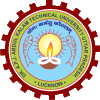Institute of Engineering & Technology, Lucknow
अभियांत्रिकी एवं प्रौद्योगिकी संस्थान, लखनऊ
An Autonomous Constituent Institute of Dr. A.P.J. Abdul Kalam Technical University Uttar Pradesh, Lucknow
Dr APJ Abdul Kalam Technical University Uttar Pradesh, Lucknow
Council/Bodies
Co-curriculars
IET in News
- Deep learning, AI to help patients with brain injuries : Times of India
- IET sets up centers for green hydrogen & electric vehicles : Times of India
- 'सात फेरे' स्टार्टअप से शादी की सब बुकिग एक ही जगह : Hindustan Times
- स्टार्टअप ने जीता पांच लाख का पुरस्कार : Amar Ujala
- Farmer’s son tops GATE in electrical engg, eyes PSU job : Times of India
Contact Us
Institute of Engineering & Technology,
Sitapur Road,Lucknow
Uttar Pradesh
India
Pin Code : 226021

